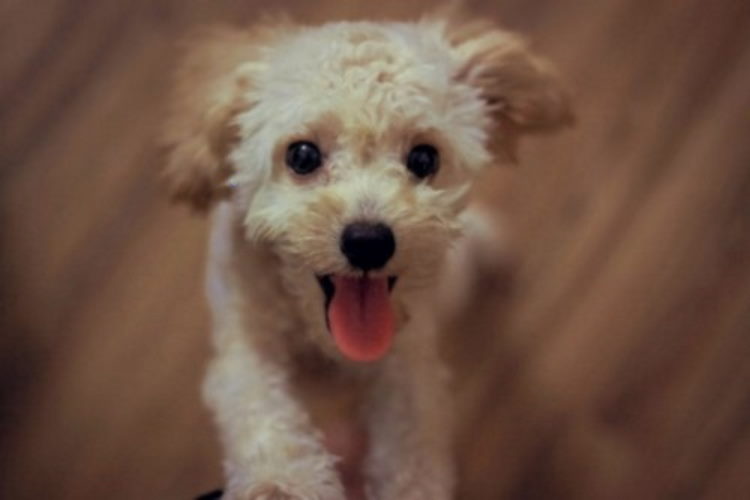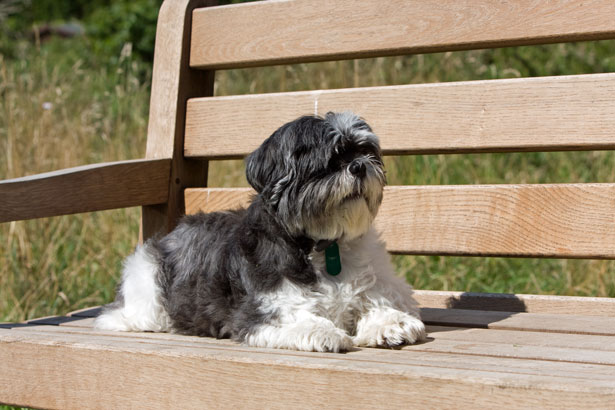5 Tricks On Potty Training Your Dog With Potty Pads
AUGUST 23, 2018 | WRITTEN BY DAVID HUNER
Usually, potty training requires quite an amount of time, patience as well as loads of attention. Even when it feels like you are on top of things, accidental pooping and peeing can still happen.
A product that can make the process much quicker, easier and far less messy is a potty pad.
Potty pads are an extremely effective way to potty train your dog.
They are normally made using a number of layers of absorbent paper which are sealed at the edges.

Benefits of Using Potty Pads For Your Dog
- Dogs usually find it easier to ‘do their business’ on potty pads.
This is because pheromones, which are known to attract dogs, have been added to many potty pads. As a result, you would not have to spend a lot of time encouraging your pet to use them.
- One of the biggest advantages is that your floors are protected from fecal accidents, saving you the time and stress of tedious cleaning up afterwards.
The layers of absorbent paper would efficiently soak up the mess, making cleaning easy and quick.
- You would definitely find potty pads very useful if you live in an apartment without your own yard.
- A number of potty pads currently on the market include odor neutralizers.
This is an important point to note as you do not have to worry so much about smells that linger long after you have cleaned up.
- They enable you train your pet to properly and responsibly empty his or her bowel and bladder indoors when it is impossible or inconvenient to do so outdoors.
For instance, in a case of harsh weather – heavy rain, snow or wind – taking your pet outside would simply not be an option.
In addition, if you have to spend a number of hours a day away from home, the pee pads would provide the most ideal spot to relieve himself or herself when you’re away.
- They are generally great for dogs with health-related issues, including older dogs that suffer incontinence.
What are the disadvantages Of Using Potty Pads?
- The time of the whole potty training process ends up being stretched. You would have to first spend time training your pet to eliminate indoors before doing so outdoors.
- The non-disposable potty pads are usually quite bulky.
If you live in a home with limited amount of space, a potty training pad would likely take up even more area.
- Potty training pads aren’t always the prettiest things to look at and may negatively affect the aesthetics of your home.
It may seem a bit trivial but this detail is actually important to a few people.
- Some puppies end up chewing the pads and not use them for the original intent.
- Your puppy may become too accustomed to it, which is definitely not something to aim for.
Some Points to Note When Training Your Pet Using Potty Training Pads
Type of potty pads
There are various types of dog training pads currently available on the market.
- Disposable potty pads
These types of training pads are made to be used and disposed of on a daily basis. They are usually more hygienic as you simply discard either once your dog poops or at the end of the day if things are less messy. However, in the long run, you would most likely end up spending more money repurchasing them.
- Washable potty pads
Washable pads are thick as well as absorbent and have been created for repeated use. They are less likely to be destroyed by chewing but it can be a bit of a chore to clean them continuously due to multiple use. Some users end up placing a layer of a disposable pad over the washable types to make things easier.
- Faux grass: A few feature quite fancy designs made to look like grass.
Quality of potty pads
One other thing to take note of is to use a high-quality potty pad from the get go as not all of them are created equal.
Top-grade potty pads usually protect your floors from messes that occur from leakages or any accidents.
Size of potty pads
The size of the potty pad is largely dependent on the size of your dog. Bear that in mind when making your purchase.
However, if it is possible, try to use a potty pad that is significantly larger than your dog.
This is because bigger pads offer a lot more space for a more successful and safer aim.
With large or extra-large pads, the chances of your pet missing the pad and messing up your floor are much lower.
If the pads aren’t large enough, this is where disposable pads really come in handy.
Simply place multiple pads, still within the designated potty area only, to soak up the mess.
Brand of potty pads
Another important thing to note is to ensure that you stick to only one brand of pads.
Using more than one brand can end up confusing your pet.
With potty training pads, the goal is to ensure your pet doesn’t become too dependent on them.
They must not replace your pet’s ability to eliminate waste more responsibly – your pet has to be trained to go outside instead of making a mess at home.
The end game is to teach your dog to make use of potty pads only when necessary like when home alone or it is impractical to go outdoors.
5 Tips on Potty Training Your Dog Using Potty Pads
Now onto the main aim of this article – a few tips to effectively and, more importantly, quickly potty train your dog by using a potty pad. To successfully potty train your pet, you would need the following:
- Potty pads (of course)
- A timing device
- Loads of treats
- A huge dose of your time, attention and patience
- Ensure you set up a regular and consistent schedule for your pet to go potty and stick to it. A few great moments are when your dog just wakes up, after a meal, after a walk, at the end of playtime, every two hours or right before bedtime. If for any reason you are unavailable at a time you have set out to potty train, get a trusted friend or dog-sitter to get the job done for you.
- At these set times, move your pet to the area you have specially arranged for potty training. This designated spot should ideally be a space your dog is already comfortable in but try to avoid where your dog eats or drinks. In addition, it has to be in a confined place which you must also have easy visual access to.
- Train your pet using the most apt commands. “Go potty!” or “pee!” is always a good place to start. Simply saying “potty!” also works effectively.
- If the results are favorable, don’t hold back on praise and giving a ton of positive reinforcement. Reward your pet with a lot of treats too. Constantly doing these would cause your pet to associate going on his or her potty pad with good behavior. This in turn would then become a habit when done continuously, eventually making for a fully potty-trained dog.
- Was the outcome not what you wanted? That’s OK. Honestly, it actually helps if you get mentally prepared for a few accidents in the beginning of the training.
The last thing you should do is yell or scold. In fact, accidents are a great chance to enforce the lesson that going in the potty pad is the right thing to do. When fecal mishaps occur, the best solution is to say a firm “no”, then simply guide your pet back to the potty pad and praise when evacuation is completed there.
Final Verdict on Potty Training Pads
All in all, choosing to potty train your dog using potty pads is an advisable option to go for; however, some precautions should be taken.
For instance, placing a potty pad everywhere your pet has accidents is not a wise thing to do.
Since the final goal is to have one designated spot, you would only be confusing your pet.
After successfully training your dog to use potty pads inside, you would then take the pad outside and place it at your most preferred bathroom location.
Your dog would need to understand that no matter where the pad is placed, that is always the suitable spot for going.
Once this result is achieved, the pad can then be taken away completely for you to train your pet to go outside in the absence of potty pads.
As mentioned previously, the ultimate aim is for your dog to not stay dependent on potty pads.
If at all they are to be used after training, let it be in an extreme scenario such as a health or bad weather condition.
As already established, potty training can be tedious especially when you just start.
It may take a few tries to get your dog to feel comfortable using potty pads.
However, remaining patient and lavishing praise on your pet works wonders.
Also staying consistent with your schedule, the location of the pad and the all-round training process would leave you with a successfully potty trained pet.
That means less cleaning up for you, which is always a good thing.
ABOUT THE AUTHOR:
David Huner is a passionate dog trainer whose interest in taking care of animals continues to grow with each passing day. He started out working as a volunteer in different pet shops where he gained more experience and knowledge about pet training. Now David enjoys his private training classes with pets, and he happily shares most of his tips on pettrainingtip.com



